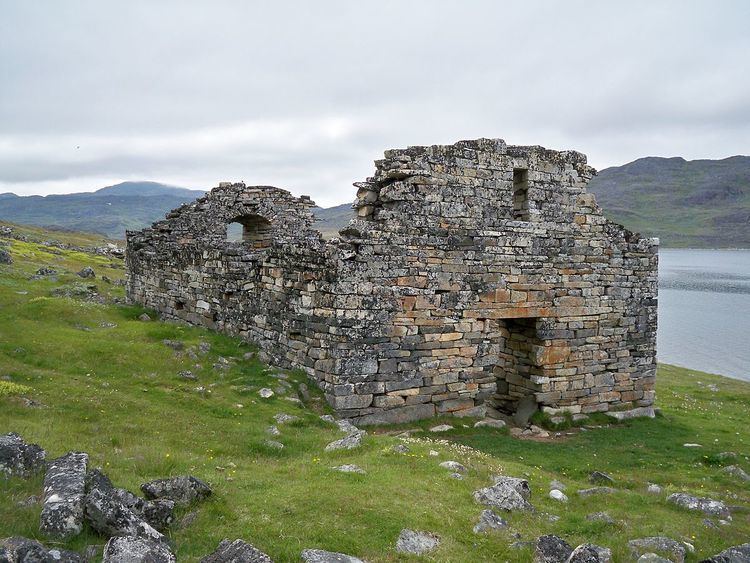Medieval architecture in North America is an anachronism. Some structures in North America can however be classified as medieval, either by age or origin. In some rare cases these structures are seen as evidence on pre-Columbian trans-oceanic contact. Independent of whether one believes in the disputed pseudoscience, these buildings are of interest to American scholars of medieval architecture.
L'Anse aux Meadows, a Norse settlement in Newfoundland. Foundations of eight structures, visible today only as mounds because they were reburied in a conservation effort. Includes modern reconstructions.Church of Hvalsey, a Norse church in Greenland. Additional remains of Norse-era settlements.Medieval building that have been transported to North America in modern times.
The Cloisters museum, New York City, a branch of the Metropolitan Museum of Art housed in a complex integrating elements from several different medieval structuresSt. Bernard de Clairvaux Church, a 12th-century cloister from Spain, reassembled in FloridaElements of a 12th-century cloister from Saint-Génis-des-Fontaines Abbey, a Romanesque portal, and a 15th-century chapel in the Philadelphia Museum of ArtPart of a Romanesque cloister in the Toledo Museum of Art, OhioChapel of St Martin de Sayssuel, (St. Joan of Arc Chapel), Marquette University, Milwaukee, WisconsinAgecroft Hall, Richmond, VirginiaChapterhouse of the Abbey of María de Óvila, under reconstruction at the Abbey of New Clairvaux, Vina, CaliforniaA 1524 sidechapel from France in the Detroit Institute of ArtsOther later period buildings were also transported like the Cotswold Cottage, built in the early 17th century in Chedworth, Gloucestershire, England, now in The Henry Ford museum in Dearborn, Michigan. The Church of St. Mary the Virgin, Aldermanbury, London, which was designed by Sir Christopher Wren in 1677 is now in Fulton, Missouri. It includes a spiral staircase which probably dates to the 15th century.

